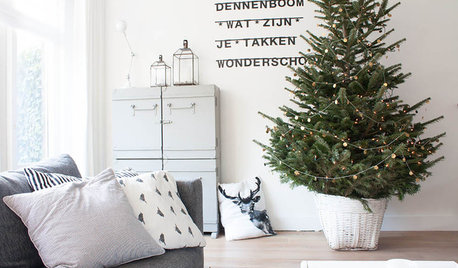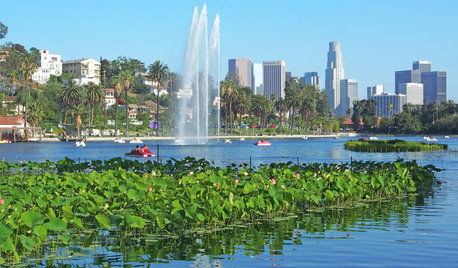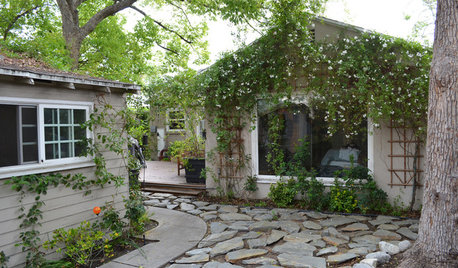Trees: Public Enemies #1-AND-Guardian Angels #1
hostaLes
11 years ago
Related Stories

HOUZZ TOURS13 Character-Filled Homes Between 1,000 and 1,500 Square Feet
See how homeowners have channeled their creativity into homes that are bright, inviting and one of a kind
Full Story
HOLIDAYSHouzz Call: Show Us Your Christmas Tree!
How lovely are your branches? Post a picture and share your stories
Full Story
SMALL HOMES28 Great Homes Smaller Than 1,000 Square Feet
See how the right layout, furniture and mind-set can lead to comfortable living in any size of home
Full Story
PETSDealing With Pet Messes: An Animal Lover's Story
Cat and dog hair, tracked-in mud, scratched floors ... see how one pet guardian learned to cope and to focus on the love
Full Story
PETS6 Ways to Help Your Dog and Landscape Play Nicely Together
Keep your prized plantings intact and your dog happy too, with this wisdom from an expert gardener and dog guardian
Full Story
FRUIT TREESHow to Grow Your Own Persimmons
Sturdy and easy to care for, these trees offer bright fruit through winter — and keeping them in bounds is no sweat
Full Story
CONTEMPORARY HOMESHouzz Tour: A Home in Sync With Its Surroundings
A contemporary Los Angeles home has big views and seamless transitions between indoors and outdoors
Full Story
COMMUNITYIn L.A.’s Echo Park, a New Urban Development Takes Flight
Blackbirds, a new ‘microneighborhood’ near downtown, is Los Angeles’ latest small-lot urban infill project
Full Story
HOUZZ TOURSMy Houzz: Budget-Minded Comfort for a 1940s Hollywood Bungalow
Plush furnishings, warm colors and a cottage garden give a first-time owner a house worth coming home to
Full Story
INSPIRING GARDENSNative Plants Bring 10 Southern California Front-Yard Gardens to Life
Rare plants, rain gardens and wildlife habitats are just a few of the features showcased on the 2016 Theodore Payne Native Plant Garden Tour
Full StoryMore Discussions










thisismelissa
mosswitch
Related Professionals
Reading Landscape Architects & Landscape Designers · Wrentham Landscape Architects & Landscape Designers · Barrington Hills Landscape Architects & Landscape Designers · Jackson Landscape Contractors · Wickliffe Landscape Contractors · Lauderdale Lakes Landscape Contractors · Hayward Driveway Installation & Maintenance · Wildomar Driveway Installation & Maintenance · Ridgewood Fence Contractors · Cartersville Fence Contractors · Cicero Fence Contractors · Glenpool Fence Contractors · North Potomac Fence Contractors · Tumwater Fence Contractors · Glen Ellyn Solar Energy Systemsken_adrian Adrian MI cold Z5
trudy_gw
hosta_freak
harryshoe zone6 eastern Pennsylvania
mctavish6
coll_123
woodnative
hostaLesOriginal Author
i-like-to-grow
User
hostaLesOriginal Author
ci_lantro
User
hostahillbilly
hostaLesOriginal Author
hostaLesOriginal Author
jaco42
coll_123